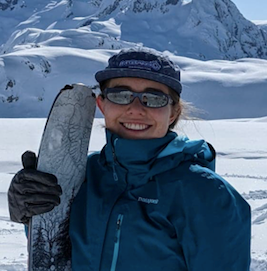2021 award recipients
Meet the 2021 URE award recipients
Click a name to learn more about the students and their award-winning projects.
College of Arts
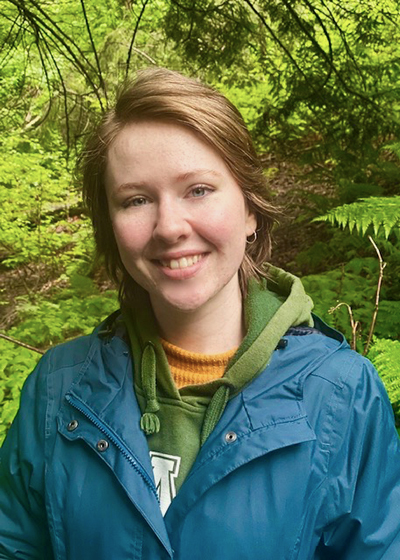
Lana Harach
Mitigating Dangers of Vespa mandarinia (Asian Giant Hornet)
Faculty supervisor: David Thomson
Personal Note: As an agricultural science student, my UFV agriculture professors inspired an interest in entomology and pest management. When I saw how much media attention this new pest presence in British Columbia was getting, I wanted to know more about the whole picture which this project helped me accomplish! This research opportunity has also benefited me by building on research skills that I am now using in my jobs.
Project Summary: “Mitigating Dangers of Vespa mandarinia (Asian Giant Hornet)” was inspired by the recent hornet nests and individuals found in British Columbia. I believed it was a critical topic to address because of the danger of the hornet to individuals and our agricultural sector. I wrote this article to address agricultural professionals by providing integrated pest management information. However, as there was much overlap of information in concerns and interests, I also elaborated on solutions that the general public could implement and use as well.
My article discusses the dangers that this pest brings to British Columbia's people and environmental systems (including specifically, the agricultural sector). Through identifying their biology and habitat I also compiled factors that could contribute to determining how likely Vespa mandarinia will become invasive. My article also touched on techniques for controlling or minimizing risks associated with nests and mitigating geographical spread.
Return to recipient list ↑
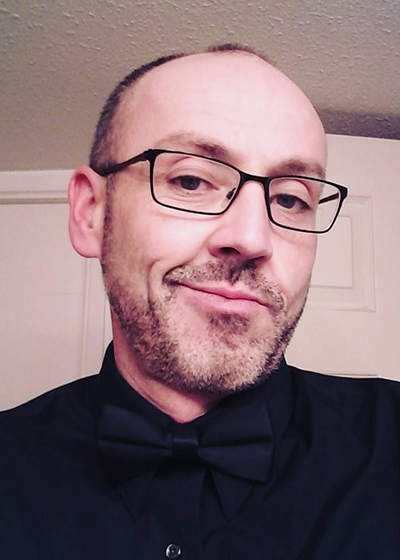
Paul Hill
Systemic White Racism in Canada: A Graphic Novel
Faculty supervisor: Dr. Anna Griffith
Personal Note: I am privileged to have access to a higher education where students may explore the complexity of following divergent paths to knowledge and to be recognized for demonstrating innovative performances of knowledge. With a Bachelor of Arts from UFV, I will continue my education toward a professional practice. I am humbled to be awarded as a white male for exploring systemic racism in Canada.
I chose Systemic White Racism in Canada: A graphic novel as a social media project to test my interpretations of critical and performance theories and to allow for dialogue with an audience. Learning about white fragility creates a sense of social responsibility to connect with people and participate in the discussion.
Project Summary: My ambition was to make systemic white racism an accessible subject to engage and explore with others. This project used the Instagram platform to present the historic and current social problem of racism in Canada to an audience. Through a progressive timeline, I focused on reflective assessment of white Canadian society and culture toward the oppressed.
Using illustration and text according to the social media format, I applied critical theory to reveal and challenge our racist power structures. I worked through visually interpreting my white perspective of Canadian moments that demonstrate our historical, collective, white race experience with racism. As a result, I had to change many of my assumptions toward systemic oppression, white privilege, and racism.
Return to recipient list ↑
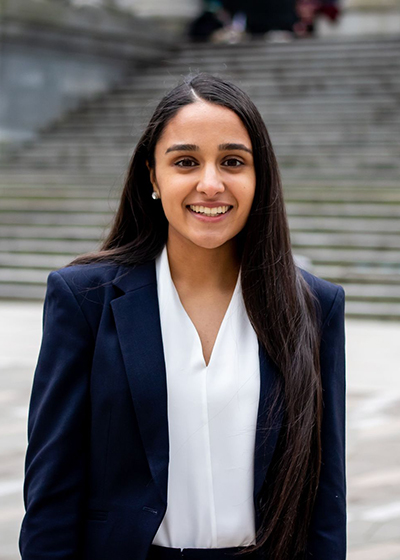
Tripat Sandhu
Safe Use of Confession Pages
Faculty supervisors: Dr. Amy Prevost and Dr. Hayli Millar
Personal Note: Research at UFV has provided me a foundational understanding on how to conduct research, think critically, make practical recommendations, and collaborate with professors. My research on “Safe Use of Confession Pages” provided me an opportunity to see how UFV students can be potentially exploited by confession sites. I am excited to transfer the skills and knowledge I acquired through my research work to law school.
Project Summary: “Safe Use of Confession Pages” is a guide for students, faculty, and staff raising awareness of the potential exploitative nature confession pages possess. Through student consultations and media assessments, it was discovered that although confession pages can serve as a platform to connect with others, there contains many disadvantages of confession pages, including bullying, deceit, discrimination, and potential for being lured into financial or sexual exploitation. Confession pages may claim to be anonymous, but they are not.
Ultimately, students must be aware of the potential for exploitation as posting on these platforms can expose a student’s vulnerability. The guide shares the importance of UFV outlining support services into course syllabuses and reminding students about these services throughout the semester.
Return to recipient list ↑
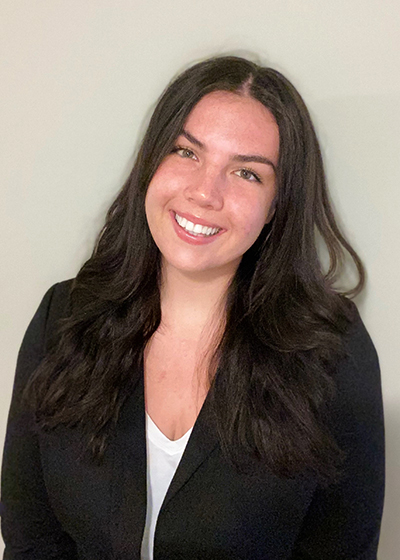
Ireland Bellsmith
Safe Use of Confession Pages
Faculty supervisors: Dr. Amy Prevost and Dr. Hayli Millar
Personal Note: I am a fourth-year student pursuing a Bachelor of Arts in Criminal Justice degree. During my third year, I studied a course related to Diversity and Crime in Canada. As a result, I gained an enhanced understanding of issues relating to human rights and the systemic discriminatory barriers that marginalize certain individuals and groups in Canada. From this learning experience, my goal to be a part of the work that promotes human rights, safety, access to justice, diversity, inclusion, and equity quickly blossomed.
The opportunity to work on this research project has allowed me to begin exploring this goal. Further, it has allowed me to collaborate with some amazing faculty members and peers to discuss, research, and analyze the real issues and potential vulnerabilities that many university students experience. This work has provided me with an enriched learning experience, and I will carry the skills and knowledge that I have gained with me as I embark on a career within the Criminal Justice field. Overall, I look forward to continuing on a path that involves academic research and professional work that is in alignment with the UN Sustainable Development Goal #16 of peace, justice, and strong institutions.
Return to recipient list ↑
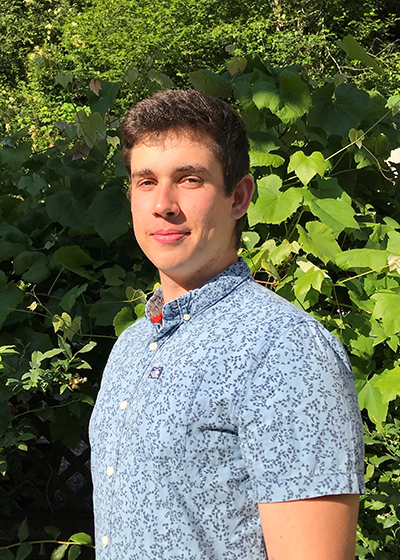
Mika Bachmann
How different healthcare systems affect the first wave of COVID-19
Faculty supervisor: David Dobson
Personal Note: I'm a third year Economics Student at UFV and am enrolled in the Co-op program at UFV, which has allowed me the possibility to work for Indigenous Services Canada in the summer of 2021. I am not yet certain what my final occupation will be, but have interests ranging from financial securities over Economists to becoming a lawyer. The co-op terms will allow me to further evaluate my career goals and interests. Writing this paper has strengthened my interest in a role with the Canadian government as an economic advisor or policy analyst.
Project Summary: As COVID started to impact the world in 2020 I grew increasingly interested in how to beat the pandemic and consistently checked case numbers, deaths and generally all available data. In the Fall of 2020, given the chance of producing a study on a topic of my choice, COVID-19 and the impact of healthcare on the severity of the crisis became my focus point for the original study. After collecting secondary data from public sources and literature reviews, I analyzed the data through SPSS and was able to conclude a multitude of interesting findings.
Most importantly, I showed that it didn't matter how much money was spent on healthcare in a given country, rather the per capita strength of the health care system. An increased number of doctors, nurses and hospital beds allowed for low death rates, even in countries that saw extremely high cases in the first wave of COVID-19. The data was largely analyzed through t-tests and the Analysis of Variance, showcasing the relations with 95% confidence.
Return to recipient list ↑
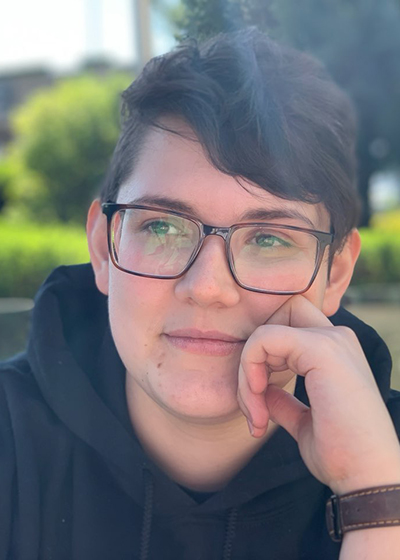
Sien Barnett
Bridging the gap: Exploring Literary Traditions in Alison Bechdel's Fun Home
Faculty supervisor: Dr. Hilary Turner
Personal Note: I’m rounding up my last year at UFV and will receive a Bachelor of Arts degree with a major in English Literature. Going forward, I hope to pursue a Master’s degree in the field of Anglo-Saxon, Norse, and Celtic Literature and follow up with a PhD in the same area with plans of eventually becoming a professor. While this project started as a final paper made to fulfill course requirements, the deeper I got into the subject of visual metaphors and the relationship between the European emblem tradition, figurative language, and graphic novels, the more interested in the connections between these subjects I became and what began as an assignment quickly evolved into a research project.
My time at UFV has introduced me to some brilliant professors who inspired me with their patience and mentoring and are part of the reason why I am choosing to pursue further education.
Project Summary: The relationship between figurative language and the graphic novel genre has long been an object of discussion among scholars. This relationship between visual, verbal, and figurative is on display in Alison Bechdel’s Fun Home: a Family Tragicomic; its very existence as a graphic memoir working to meld together literary traditions of the past with modern expectations and advancements to create a unique and personal mosaic. Recalling the comic form’s resemblance to the European emblem book tradition and Bechdel’s own techniques guided by the works and theories of figures such as Giambattista Vico and Kurt Schwitters, Bridging the Gap aims to explore the threads connecting the past to the present.
Through Bechdel’s masterful use of visual metaphor and allegory as well as conscious understanding, she is able to create greater depth and more cerebral devices for her audience to unpack. By investigating Bechdel’s connections to past literary traditions and her ability to create something as rich and deeply figurative as Fun Home, this project ultimately attempts to unpack the comic form and highlight the broad influences past traditions have on these modern visual-verbal hybrids.
Jordan Sheffield
Lenin to Lennon: The Role of Rock and Rap in Mongolia’s Recent Past
Faculty supervisor: Larissa Horne
Personal Note: My goal in studying History at UFV has always been to learn as much as I can about our world to be the best kind of person I can. My hopes is to translate the skills I have developed in this program into the world of creatives, writing novels and building worlds out of what I know of our own. This project was actually inspired by a music video of a band mentioned within the paper, The Hu, and snowballed from there into a project I am incredibly proud of and allowed me to open discussions of political legitimacy and cultural identity and the fascinating ways they are expressed on the Mongolian Steppe through modern music.
Project Summary: Lenin to Lennon: The Role of Rock and Rap in Mongolia’s Recent Past focuses on the role that music played in Mongolia's discourse over the last half century and how fundamental its position in society has become. The subject of music is traced back to the 1950's when Mongolia was ruled by the Mongolian Peoples' Revolutionary Party and discourse around traditional music was being opened on a state level. This trend is tracked through to the power of protest music in the 1980's and beyond, to the up swell of new genres following the Democratic Revolution of Mongolia in 1990.
In discussing Rock and Rap I aim to show connections between state-led initiatives in support of cultural tradition and powerful grassroots movements in popular culture that have grown alongside it such as the notion of Yazguur, a complex articulation of identity that I explore more within the discourse of the paper. This music has been core in the formulation of a new Mongolia and continues to play a very active role in both political critique and the expression of identity by Mongolian people today.
Return to recipient list ↑
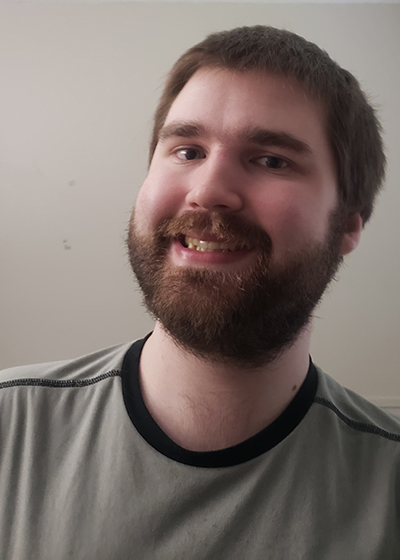
Aidan Leuszler
Horror Video Games - Sutoritera
Faculty supervisor: Dr. David Christopher
Personal Note: I am Aidan Leuszler and have been attending UFV in pursuit of a major in history with a minor in media and communications. This Horror Video Game research project has been a great benefit to me as I was able to choose a topic I really loved and explore the scholarly depths it had to offer. I will continue to use this knowledge in the future as I plan to head off to Japan where I can explore how horror and video games come together in a different culture.
Project Summary: The project was to look at the horror genre seen in cinema and literature and observe its significance in video games. We looked at many aspects, such as sound, in horror and how gameplay can scare people in ways that cinema and literature can't. One of the new subjects in the field that still will need to be explored, one that I will continue my exploration of, is the use of VR (virtual reality) in horror games allowing players to now become a part of the horror in a brand new way.
This project has certainly deepened my appreciation for video games as an art form through the careful analysis of the medium. Overall, the project has been very successful, and I am looking forward to continuing research on the subject long after the course.
Return to recipient list ↑

Shannon Pahladsingh
Do Coral Reefs Love Us Back? The Environmental Ethics of Coastal Tourism
Faculty supervisor: Anna Cook
Personal Note: As a nonbinary, queer woman of colour, I hope to use the privilege of my education to encourage conversations around equity, diversity, and inclusion, as well as inspire radical good in my communities. I am currently in my last year at UFV after studying in multiple departments, such as Visual Arts, Graphic Design, Philosophy, and Political Science. I am honoured to have known many incredible professors and technicians at UFV, who have helped guide and motivate my work.
Project Summary: We often acknowledge that we as human beings love the Earth’s coral reefs; however, do coral reefs love us back? In this essay, I explore the effects of coastal tourism on our coral reef systems, as well as how these effects impact coastal Indigenous peoples, who have long established and continuing relationships with these marine ecosystems.
Through my research, I have found that we can no longer rely on colonial, human-centered systems to sustain our coral reefs for the sake of human tourism — regardless of its benefit to the economy. We must shift our language in environmentalism towards Indigenous notions of reciprocal relationships — moving away from the idea that nature is an object to be dominated. I argue that coral reefs must be considered as their own autonomous agents in our moral community. Coral reefs are diverse teachers we can learn from, rather than consume for satisfaction.
Return to recipient list ↑
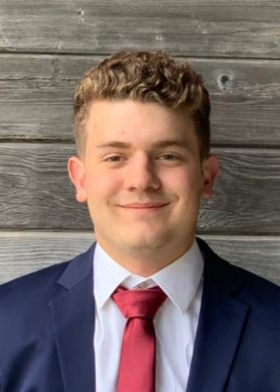
Ian Boese
From Bellwether to Bastion: An Analysis of the Party System in the Electoral Districts of Kamloops
Faculty supervisor: Dr. Hamish Telford
Personal Note: I just completed my third year at UFV, majoring in philosophy and doing two minors – political science and English. I am planning on pursuing law school admission upon the completion of my degree, specifically at the University of Victoria, and more specifically in their JD/JID program, learning both Canadian and Indigenous legal orders. The reason for the double minor is to keep the additional teachable subject of English, as I would like to teach if law school doesn’t pan out.
This project wasn’t really in my typical wheelhouse – I tend to deal more in argumentative writing rather than data and historical analysis – but as such it forced me to further develop research skills that will help me at UFV and beyond.
Return to recipient list ↑
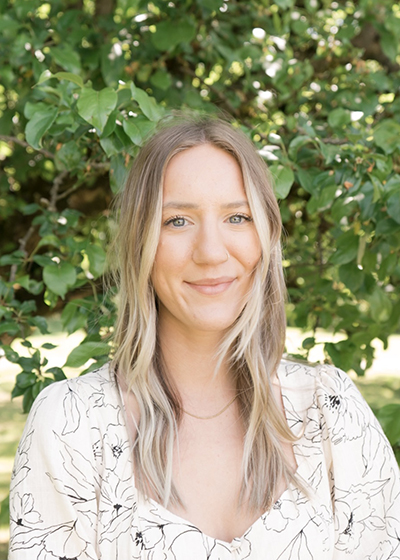
Shelby Shuster
Women’s Sensitivity to Cues of Men’s Threat in an Online Dating Simulation & the (In)effectiveness of Online Dating Recommendations
Faculty supervisor: Dr. Shawn Geniole
Personal Note: When I entered university, I could only dream of one day becoming a psychologist. After the incredible opportunity to conduct research through the UFV Psychology Honours Program, I'm many steps closer to turning that dream into reality. In the coming years, I intend to pursue graduate studies in clinical or counselling psychology with the end goal of practicing therapy and working in academia and research.
Project Summary: The longstanding issue of male perpetrated sexual violence against women is expanding to online dating contexts. This study aimed to examine whether women are sensitive to cues of men’s facial and biographical threat in online dating, whether online dating safety recommendations enhance this sensitivity in women, and if key individual differences in women associate with this sensitivity.
Women completed individual difference measures and an online dating task. In the task, women either viewed safety tips or not, then indicated their dating interest in men’s profiles which varied in levels of facial and biographical threat.
In general, women, apart from those higher in boredom susceptibility, expressed less interest in men higher in facial and biographical threat. Viewing safety tips did not alter these results. These findings suggest that women may be sensitive to men’s facial and biographical threat cues in online dating, however, standardly used online dating safety recommendations intending to reduce victimization may not adequately further enhance this sensitivity in women.
Return to recipient list ↑
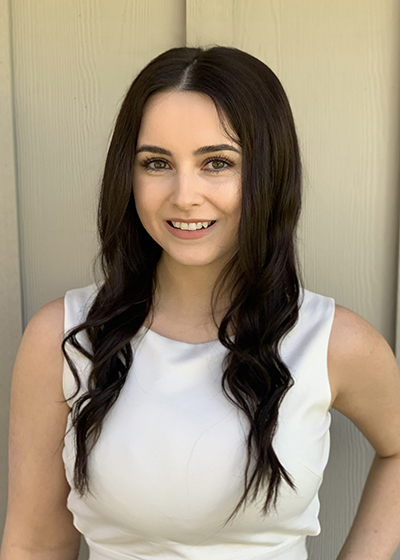
Michelle Grafton
Enforcing the Rules versus ‘Doing What’s Right’: Lived Experiences of Labour and Delivery Nurses in the Context of COVID-19
Faculty supervisor: Dr. Michael Corman
Personal Note: I am currently an undergraduate student at the University of the Fraser Valley, where I will be graduating in the spring of 2022 with a BA in sociology with a social research concentration and an extended minor in psychology.
I am extremely grateful for the opportunities UFV has given me to participate in research, both as a research assistant and through original projects, such as the pilot study which is receiving this award. I hope to continue developing as a social researcher and eventually lead projects that will contribute to the happiness and well-being of people in my community.
Project Summary: This qualitative pilot study deploys a phenomenological approach, interviewing three labour and delivery nurses in BC to understand how their everyday lived experiences have changed in the context of the COVID-19 pandemic. Results reveal that these nurses have experienced many difficult challenges and changes in the face of the pandemic, including increased responsibilities and protocols, barriers to the nurse-patient relationship, and psychological tolls such as moral injury, diminished fulfillment in work, and frustration and uncertainty over administrative responses to the pandemic.
As these psychological tolls are linked with concerning implications for mental health in the realms of burnout, depression, anxiety, PTSD, and work satisfaction, it’s important that interventions be developed to mitigate these effects, both for the sake of nurse well-being and hospital staff retention.
Return to recipient list ↑
Faculty of Health Sciences
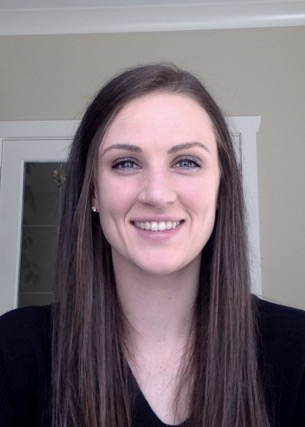
Jenna Knelson
MYSelf Club: A virtual intervention for children with self-regulation challenges
Faculty supervisors: Dr. Alison Pritchard Orr and Dr. Kathy Keiver
Personal Note: I am graduating with my Bachelor of Kinesiology and heading straight into my Master of Science in Occupational Therapy at University of Alberta. I have thoroughly enjoyed my education at UFV thanks to the amazing instructors within the KIN department who have helped to spark my passion for the health and wellness of myself and others. I am grateful to have had the opportunity to put my knowledge into practice through research, and I look forward to where those skills take me in the future.
Project Summary: MYSelf Club is an intervention that combines both exercise and self-regulation strategies, in order to improve executive function skills and behavioural control in children with self-regulation challenges. The face-to-face program that was created last year was cancelled due to COVID-19, and thus our adapted virtual MYSelf Club was developed to adhere to the COVID-19 restrictions.
My project investigates the effects of this combined exercise and self-regulation intervention for children with challenges in this area, while also highlighting the effectiveness of delivering the program virtually. I discuss the perceived benefits and drawbacks of virtual programs of this nature and, importantly, the feasibility of delivering such programs to children with neurodevelopmental disorders. Success with this modality of delivery would demonstrate the ability to provide remote and cost-efficient programs to children, which could enhance outreach and program sustainability.
Return to recipient list ↑
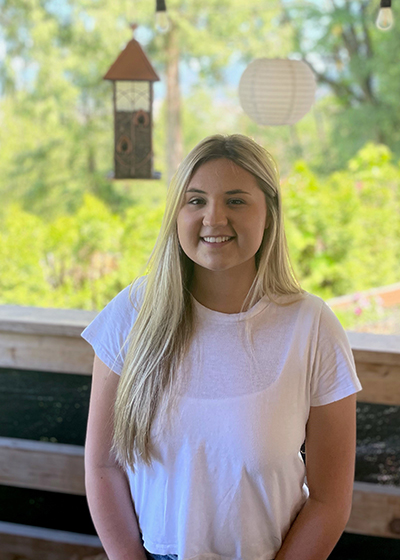
Leia Perovic
Exploring the Impact of Nursing Students' Program Experiences on Post-Graduation Career Specialty Choices
Faculty supervisor: Dr. Shelley Canning
Personal Note: Hi I’m Leia! I decided to pursue this project due to my passion for research and bettering the student experience at UFV! One of my goals is to inspire other nursing students to become involved in research - I think as young nurse researchers not only can we improve the care we provide to our own patients, but we can also help to inspire others in the profession to provide excellent evidence based care!
Project Summary: Over the past few years I have personally witnessed less and less students wanting to pursue a career in acute care post-graduation. In fact, I have noticed a trend not only in recent literature, but also right here at UFV - many nursing students enter their programs with acute areas of interest such as emergency nursing, ICU, and surgical, but over the course of their programs, where they are introduced to a variety of clinical settings, these students begin to express a desire to avoid acute care (this made me wonder what exactly influences students’ post-graduation career specialty choices!)
The findings of this study draw attention to the importance of the student experience (both in class and clinical). Additionally, the results of this study can be utilized by nursing educators and the university to work towards creating a more supportive learning environment for students.
Return to recipient list ↑
Faculty of Professional Studies
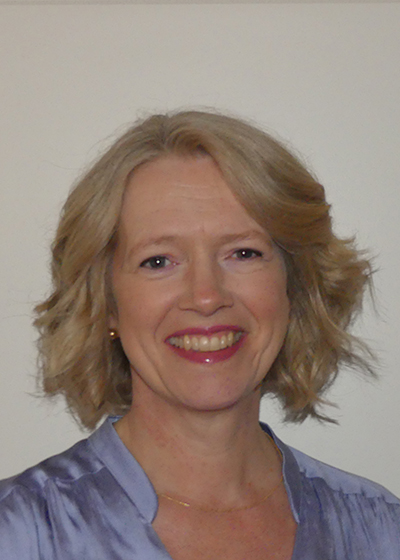
Philippa Robertshaw
Challenges and Issues in Supporting ADED Learners Online
Faculty supervisor: Dr. Chris Campbell
Personal Note: My name is Pip and I am graduating with a Bachelor of Arts in Adult Education. In my professional life, I am an IT instructor for Microsoft applications, and I am looking forward to the new opportunities that will be open to me as a graduate. In my last semester, I conducted an independent research project, applying knowledge from both my experiences as an instructor in IT, and as a mature student at UFV.
Project Summary: During this pandemic, technical skills are critical for student success. My project comprehensively examined the computer skills of Adult Education students, focusing on Microsoft Word and PowerPoint skill requirements for students in the program. Skill gaps and wish-list skills from both student and instructor perspectives were investigated, and existing IT support initiatives and pathways from UFV support departments were clarified.
After extensive interviews and a student survey, it is clear that Microsoft applications present a challenge to many students in the program, potentially becoming a barrier to learning. The report concluded with recommendations within the department that would support students with their technical challenges. Targeted, well-maintained instructional videos, links, and self-help resources could be effective additions to existing online resources and incorporated into student orientation processes. With UFV demonstrating commitment to Microsoft 365, further collaboration between support departments would clarify and further develop support resources and pathways for students.
Return to recipient list ↑
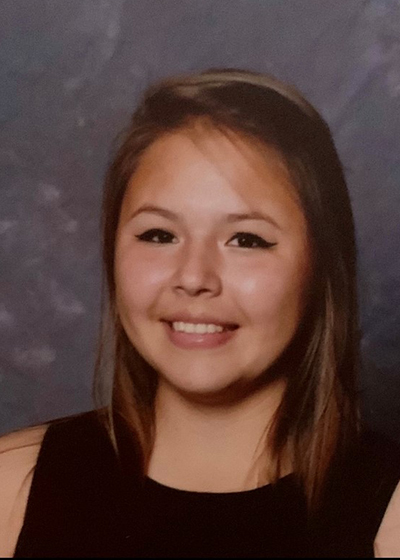
Lahayla Charlie-Campbell
The Effects of Message Framing on Building Public Support in Getting the COVID-19 Vaccine
Faculty supervisor: David Dobson
Personal Note: I'm currently pursuing a bachelor's degree in business administration with a concentration in accounting at UFV. I intend to pursue a CPA designation, but I also aspire to one day create my own company. I have never been interested in research until I took David Dobson’s' class. However, his lesson has shifted my view and prompted me to consider new possibilities. Our project theme was assigned to us by our professor, and we would not have been able to complete it without his valuable insight and guidance.
Project Summary: While the COVID-19 pandemic will have a lasting effect globally, returning to pre-pandemic normalcy will depend on significant vaccine uptake to support herd immunity. Vaccine hesitancy, and in its more severe form, anti-vaccination movements, can jeopardize recovery. Thus, it is imperative that public health authorities present vaccine messages and visuals in a manner that garners public support and confidence. In our report, we analyze a wide array of factors that affect message and image framing including susceptibility and severity of the virus, vaccine intention, perception of vaccine safety and efficacy, and flu shot history, as well as demographic features.
From our analysis, we determined that allaying concerns about vaccine safety and efficacy as a preliminary step increases vaccine intention, which in turn, increases the effectiveness of framing. Further, engraining the act of receiving common vaccines post-pandemic will enhance the persuasiveness of framed health messages and images for future outbreak event. Lastly, across demographic profiles, individuals worry more about family and friends contracting the virus. In light of this, positive messages or negative images that are family-centric will be most effective on the general public.
Return to recipient list ↑

Shreya Joseph
The Effects of Message Framing on Building Public Support in Getting the COVID-19 Vaccine
Faculty supervisor: David Dobson
Personal Note: I’m Shreya Joseph, currently doing my 4th year in Business Administration with a minor in Organizational Studies. I’m passionate about helping people and making a difference and dream of working with a non-profit organization and contribute to humanitarian activities. Engaging in the research project on COVID-19 vaccine framing enhanced my university experience as I was able to gain understanding and skills in collecting data and analyzing the research. With the guidance of Mr. Dobson and the collaboration between my peers, this project was made possible. I believe I could use these skills in the future before starting my own non-profit. Data mining and analytics is an area that is slowly picking up and it helps understand trends, potential and also gives direction. I aim to use these skills in choosing the right option for my future endeavors.
Project Summary: While the COVID-19 pandemic will have a lasting effect globally, returning to pre-pandemic normalcy will depend on significant vaccine uptake to support herd immunity. Vaccine hesitancy, and in its more severe form, anti-vaccination movements, can jeopardize recovery. Thus, it is imperative that public health authorities present vaccine messages and visuals in a manner that garners public support and confidence. In our report, we analyze a wide array of factors that affect message and image framing including susceptibility and severity of the virus, vaccine intention, perception of vaccine safety and efficacy, and flu shot history, as well as demographic features.
From our analysis, we determined that allaying concerns about vaccine safety and efficacy as a preliminary step increases vaccine intention, which in turn, increases the effectiveness of framing. Further, engraining the act of receiving common vaccines post-pandemic will enhance the persuasiveness of framed health messages and images for future outbreak event. Lastly, across demographic profiles, individuals worry more about family and friends contracting the virus. In light of this, positive messages or negative images that are family-centric will be most effective on the general public.
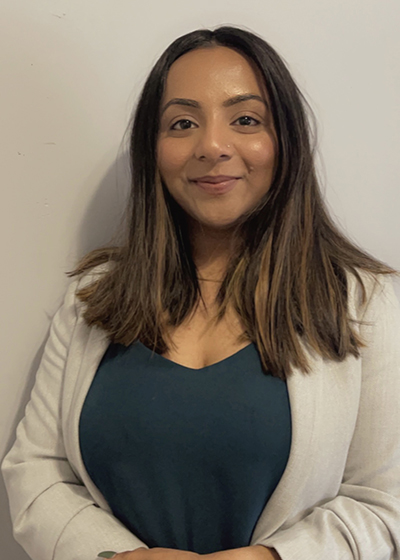
Anureet Kaurha
The Effects of Message Framing on Building Public Support in Getting the COVID-19 Vaccine
Faculty supervisor: David Dobson
Personal Note: After my degree I am planning forward to work in bank and I planning on doing the giving the exams soon. The class of BUS 320 was a requirement for me to complete my studies and the project was a major part of the class. So, my teammates and I decided to give our best.
Project Summary: While the COVID-19 pandemic will have a lasting effect globally, returning to pre-pandemic normalcy will depend on significant vaccine uptake to support herd immunity. Vaccine hesitancy, and in its more severe form, anti-vaccination movements, can jeopardize recovery. Thus, it is imperative that public health authorities present vaccine messages and visuals in a manner that garners public support and confidence. In our report, we analyze a wide array of factors that affect message and image framing including susceptibility and severity of the virus, vaccine intention, perception of vaccine safety and efficacy, and flu shot history, as well as demographic features.
From our analysis, we determined that allaying concerns about vaccine safety and efficacy as a preliminary step increases vaccine intention, which in turn, increases the effectiveness of framing. Further, engraining the act of receiving common vaccines post-pandemic will enhance the persuasiveness of framed health messages and images for future outbreak event. Lastly, across demographic profiles, individuals worry more about family and friends contracting the virus. In light of this, positive messages or negative images that are family-centric will be most effective on the general public.
Return to recipient list ↑
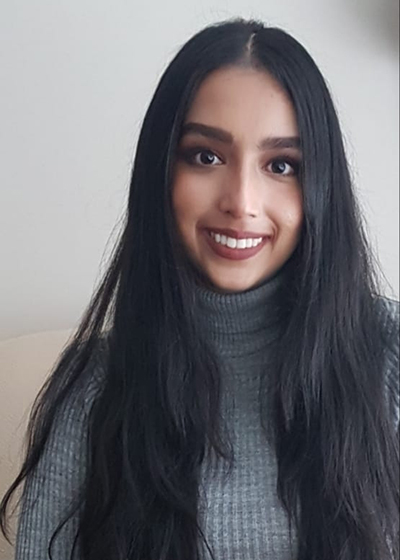
Trisha Kumar
The Effects of Message Framing on Building Public Support in Getting the COVID-19 Vaccine
Faculty supervisor: David Dobson
Personal Note: I am a fourth-year student working towards a Bachelor of Business Administration degree in finance. After completing my undergraduate degree, I intend to pursue a graduate program that focuses on both finance and research.
Project Summary: While the COVID-19 pandemic will have a lasting effect globally, returning to pre-pandemic normalcy will depend on significant vaccine uptake to support herd immunity. Vaccine hesitancy, and in its more severe form, anti-vaccination movements, can jeopardize recovery. Thus, it is imperative that public health authorities present vaccine messages and visuals in a manner that garners public support and confidence. In our report, we analyze a wide array of factors that affect message and image framing including susceptibility and severity of the virus, vaccine intention, perception of vaccine safety and efficacy, and flu shot history, as well as demographic features.
From our analysis, we determined that allaying concerns about vaccine safety and efficacy as a preliminary step increases vaccine intention, which in turn, increases the effectiveness of framing. Further, engraining the act of receiving common vaccines post-pandemic will enhance the persuasiveness of framed health messages and images for future outbreak event. Lastly, across demographic profiles, individuals worry more about family and friends contracting the virus. In light of this, positive messages or negative images that are family-centric will be most effective on the general public.
Return to recipient list ↑
Sukhjot Sidhu
The Effects of Message Framing on Building Public Support in Getting the COVID-19 Vaccine
Faculty supervisor: David Dobson
Personal Note: Sukhjot is a third year Bachelor of Business Administration student.
Project Summary: While the COVID-19 pandemic will have a lasting effect globally, returning to pre-pandemic normalcy will depend on significant vaccine uptake to support herd immunity. Vaccine hesitancy, and in its more severe form, anti-vaccination movements, can jeopardize recovery. Thus, it is imperative that public health authorities present vaccine messages and visuals in a manner that garners public support and confidence. In our report, we analyze a wide array of factors that affect message and image framing including susceptibility and severity of the virus, vaccine intention, perception of vaccine safety and efficacy, and flu shot history, as well as demographic features.
From our analysis, we determined that allaying concerns about vaccine safety and efficacy as a preliminary step increases vaccine intention, which in turn, increases the effectiveness of framing. Further, engraining the act of receiving common vaccines post-pandemic will enhance the persuasiveness of framed health messages and images for future outbreak event. Lastly, across demographic profiles, individuals worry more about family and friends contracting the virus. In light of this, positive messages or negative images that are family-centric will be most effective on the general public.
Return to recipient list ↑
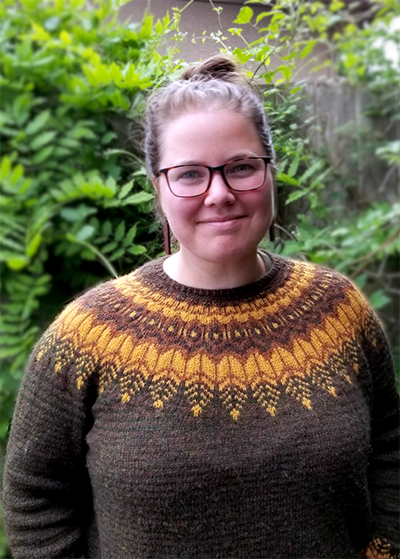
Natalie Dahl
Social work and the practice/pursuit of social justice
Faculty supervisor: Dr. Lisa Moy
Personal Note: I am entering my 4th year of the Bachelor of Social Work and I plan to work with youth in the future. Social justice is integral to social work, and this research has reshaped the way that I approach my practice and my education. It has helped me to critically reflect on my own understandings and to actively incorporate relationality as a student and future practitioner.
Project Summary: The research project “Social Justice and the Practice/Pursuit of Social Justice” examines social workers’ understanding of social justice and how they enact it in their everyday practice. Through surveys and interviews, we explored what social justice means and looks like in a variety of social work contexts. Although social justice is a core professional value, there is little research centred around the practice of social justice in the field.
The research findings highlighted relationality, advocacy, agency, equity and self-reflection as key components of social justice. Social work education can prepare students to practice social justice through an expanded health care curriculum, a focus on advocacy skills development, and an emphasis on social justice at the micro-level. Despite the numerous challenges, we have found that social workers continue to work creatively and consistently towards social justice, and we hope that this research encourages social workers in the field.
Return to recipient list ↑
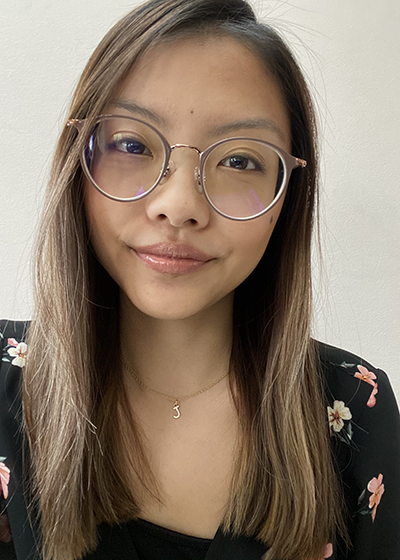
Jennifer Banh
Social work and the practice/pursuit of social justice
Faculty supervisor: Dr. Lisa Moy
Personal Note: I will be going into my 4th-year of the Bachelor of Social Work program and I hope to be working with children and families in the future. This research project allowed me to recognize how relationality and advocacy can be integrated into my future practice. It also made me realize the importance of research to ensure the appropriate delivery of services and to strengthen social work education.
Project Summary: The research project “Social Justice and the Practice/Pursuit of Social Justice” examines social workers’ understanding of social justice and how they enact it in their everyday practice. Through surveys and interviews, we explored what social justice means and looks like in a variety of social work contexts. Although social justice is a core professional value, there is little research centred around the practice of social justice in the field.
The research findings highlighted relationality, advocacy, agency, equity and self-reflection as key components of social justice. Social work education can prepare students to practice social justice through an expanded health care curriculum, a focus on advocacy skills development, and an emphasis on social justice at the micro-level. Despite the numerous challenges, we have found that social workers continue to work creatively and consistently towards social justice, and we hope that this research encourages social workers in the field.
Return to recipient list ↑
Faculty of Applied and Technical Studies
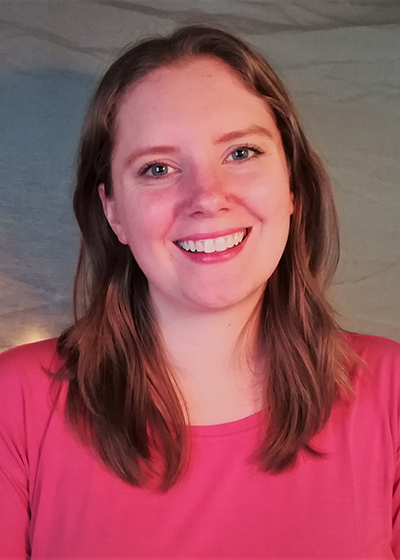
Emily Rettich
Perturbative Contributions to the Isoscalar 0+- Hybrid Decay to pi- b1(1235)+
Faculty supervisor: Dr. Derek Harnett
Personal Note: For the last few years, I have become increasingly fascinated with how the building blocks of our universe function – from electron wave functions to complex plasmas. My research with Dr. Derek Harnett allowed me to look even deeper, learning how the underlying fundamental particles interact and the math that physicists use to quantify it. I am also very interested in nuclear fusion as a power source and am planning on studying the physics of plasma – its fuel – in graduate school.
Project Summary: My project was to study the decay of a hybrid meson: a theoretical type of particle that physicists suspect exists and are currently looking for. I started by learning the basics of particle physics: sketching Feynman diagrams, the special notation used, new conservation laws, and more. Once I could use these tools on my project, I then wrote code in Mathematica to simplify the equations they generated. Finally, the equations can be solved using numerical integration programs.
These theoretical results are significant because they provide a road map of what kind of behaviour physicists should keep an eye out for when looking for such novel particles. Once a decay rate is calculated, for example, they can watch for particles that decay at that rate. The more theoretical properties to compare to, the more certain an experimentalist can be of their findings.
Return to recipient list ↑
Faculty of Science
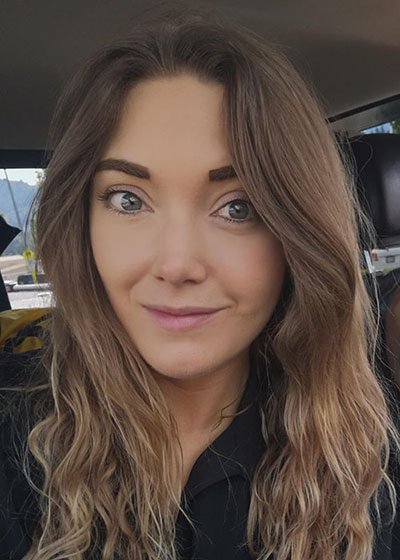
Jade Sherwood
Chemical cues of male and female Leptopilina japonica parasitoids on food substrate of the nation wide berry pest, Drosophila suzukii
Faculty supervisor: Dr. Renee Prasad
External supervisor: Dr. Paul Abrams, Agriculture and Agri-food Canada (AAFC), Agassiz
Personal Note: Research has always been a keen interest of mine since I partook in Dr. Renee Prasad’s Integrated Pest management classes and my further involvement was sparked by my participation in efficacy research trials during my practicum at UFV. This led to my employment under a student contract at Agriculture and Agri-Food Canada where I have continued to be involved in projects involving invasive insect pests in agricultural and rural settings.
Currently I am on a working term in Switzerland at the research center CABI furthering my educational journey into exploring potential biological controls of the newly invasive strawberry blossom weevil in BC and will start my Master’s thesis on this subject at UBC in Sept 2021.
Project Summary: Non-consumptive effects (NCEs) result from any costly change to a host or prey’s behavior or physiology in the presence of a natural enemy that do not result in immediate death from consumption. In some cases, NCEs can result not from immediate natural enemy presence, but rather the detection of residual indirect cues. Using the pest Drosophila suzukii (Diptera: Drosophilidae) and its introduced parasitoid Leptopilina japonica (Hymenoptera: Figitidae) as a model system, we tested whether prior presence of parasitoids on the flies’ food and oviposition substrate has NCEs on adult flies. Measuring (i) whether flies avoided contact with the oviposition substrate; and (ii) how many fly offspring were produced, in the absence vs. presence of varying numbers of male or female L. japonica.
Results indicated that adult flies avoided the oviposition substrate and that the presence of residual cues from both parasitoid sexes reduced the number of offspring produced by D. suzukii. If this parasitoid scent lingers in nature, the resulting non-consumptive effects on D. suzukii could be an important component of the biological control services rendered by L. japonica.
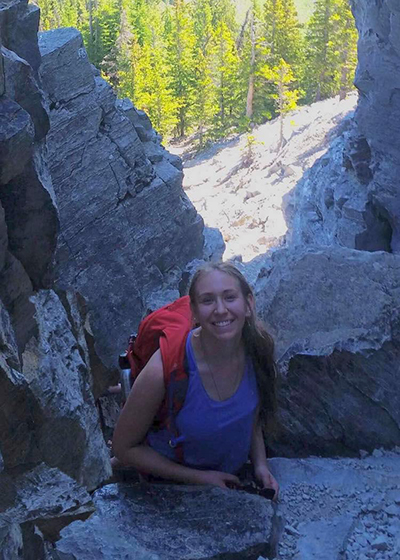
Kennedy Zwarych
Pathogen Prevalence in Wild Bumblebees (Bombus spp.) across the Fraser Valley
Faculty supervisor: Dr. Sandra Gillespie
Personal Note: I completed my honours thesis under UFV's queen bee herself, Dr. Sandra Gillespie. After completing some applied mathematics courses and attending UFV's Tofino Field School in 2019, I realized ecological research is what I have a passion for, and how I want to spend my time. I am graduating with my BSc in June 2021 and I'm very excited to begin an MSc at McGill University, researching invasion ecology. I have loved my co-op job with the Department of National Defence, and I hope to continue working on environmental issues in a government position.
Project Summary: Nosema spp. are unicellular fungi that infect bees and cause devastating effects. We investigated the rate of Nosema infections in wild bumblebees (Bombus spp.). Specifically:
- Which factors (i.e. species of bee, sex, season collected, etc.) influence the rate of Nosema infections?
- Does the amount of surrounding farmland or distance to nearest greenhouse have an effect on Nosema infections?
- Is N. ceranae (a certain species of parasite) present in wild bumblebee populations here in the Fraser Valley?
Our analysis suggested that the species of bumblebee and the collection site significantly impacted the rates of Nosema transmission (1). We also found that Nosema infection rates were lower in bumblebees collected closer to commercial greenhouses (2). Furthermore, we did not find any N. ceranae in our local bumblebees (3). With the ecological complexity of pathogen transmission, further research is encouraged to unravel why these patterns were observed.
Return to recipient list ↑
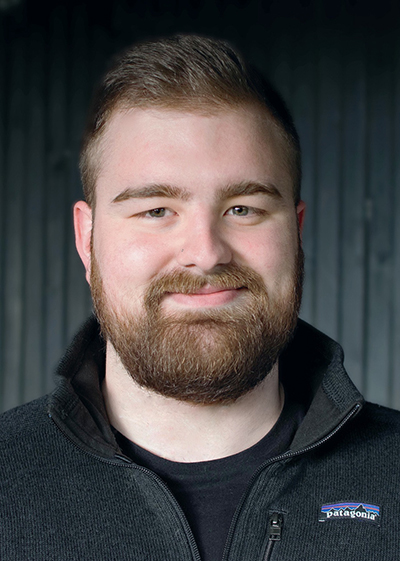
Connor Frey
Peptide mapping employing pepsin and triethoxysilylbutyraldehyde: Optimizing immobilization parameters via capillary electrophoresis and mass spectrometric analysis
Faculty supervisor: Dr. Golfam Ghafourifar
Personal Note: Next fall, I will be entering my fourth year of studies to pursue an Honours Bachelor of Science degree in Biology with a minor in Chemistry. Thereafter, I will be pursuing admission to a Canadian medical school where I plan to continue my research in proteomics within the realm of medicine. Research at UFV in the lab of Dr. Golfam Ghafourifar has developed my interests in the application of analytical chemistry to biological settings, particularly in the area of biomarkers of disease.
Project Summary: Its highly precise nature has made tandem mass spectroscopy an increasingly popular technique in proteomics. However, when biological samples are used, these workflows can become extremely complex. Thus, up-stream procedures are needed that simplify the analysis, which can be achieved through enzyme digestion. In this research, the endopeptidase pepsin was utilized as the “molecular scissors” to break down our model protein, bovine serum albumin. By immobilizing this enzyme to a solid silica substrate through the use of triethoxysilylbutyraldehyde and sodium borohydride, it allows for high enzyme-to-substrate ratios and reusability, saving both time and resources.
These results suggest that the novel triethoxysilylbutyraldehyde-pepsin immobilization allows for the cleavage of proteins into smaller peptides, simplifying the analysis of complex biological samples prior to mass spectroscopy. As a directed study in chemistry, this project enabled me to apply classroom knowledge to the lab while gaining hands-on experience that will benefit both my academic and professional career.
Return to recipient list ↑
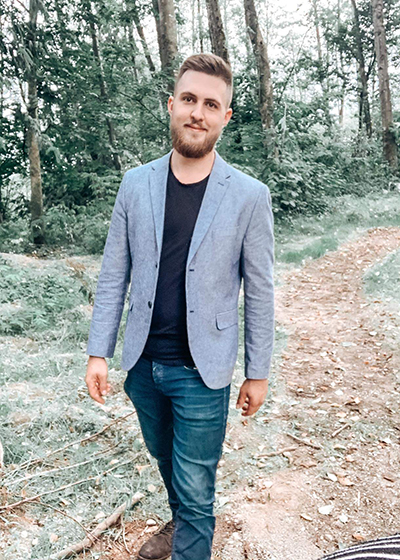
Steven Lawrence
Improved Deep Convolutional Neural Network with Age Augmentation for Facial Emotion Recognition in Social Companion Robotics
Faculty supervisor: Dr. Amir Shabani
Personal Note: I recently graduated from UFV with a BSc in Computer Science. During my final year, I engaged in research with the Interactive Intelligent systems and computing research group which helped me secure a funded research-based master's position at the University of Waterloo. At Waterloo, I will be joining the SIRRL team and working on personalized humanoid robots to help children with learning disabilities.
Project Summary: In this work, we proposed a solution addressing age bias in Facial Emotion Recognition (FER) datasets for the application of social companion robots for senior care. Our ultimate goal is to have socially intelligent robots that can both predict and emulate human emotion deployed in care home facilities to combat social isolation and provide care aid assistance. Given our deployment environment, the target audience contains individuals predominantly 50+ years in age.
Although, through experimentation, we noticed existing FER models struggle to recognize emotions among seniors due to a lack of data on seniors. To address this we used AI to artificially age FER datasets to include seniors in the data. This allowed FER models to recognize emotions among adults better.
Return to recipient list ↑
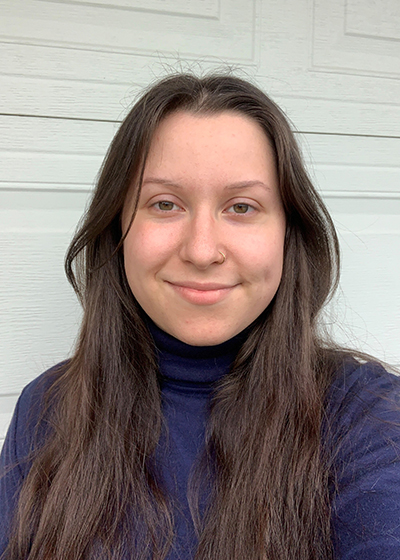
Vanessa Brewer
Luminescence dating of ancient environments, Hudson Bay Lowlands
Faculty supervisor: Dr. Olav Lian
Personal Note: My future academic goals include obtaining my Master’s degree surrounding the topic of mountainous landscapes and to one day obtain my PhD. My career goals include working with the Geological Survey of Canada and doing field research on Canadian mountain ranges. Working in the OSL lab has taught me how to engage with my field of study and understand how to utilize both my theory and practical learnings in determining a final result.
Project Summary: The Quaternary (last c. 2.5 million years of Earth’s history) landscape in the Hudson Bay Lowland region is complex. This area has exceptional access to numerous thick exposures of sediments that represent the last three glacial-nonglacial cycles. During glaciations ice eroded bedrock and dispersed economic minerals about the landscape. Knowing the timing of these events allows them to be linked over time and space. Our part of the research is intended to design and test luminescence dating techniques to provide ages for nonglacial intervals.
Our research has shown that the laboratory protocols that we have developed can be used to date events associated with the last two glacial cycles, and it has also shown promise of extending it beyond that. Our research is significant as it will provide absolute ages for key geo-climatic events, which will allow sediments associated with them to be connected over space. This, in turn, will help locate the sources of economic minerals.
Return to recipient list ↑
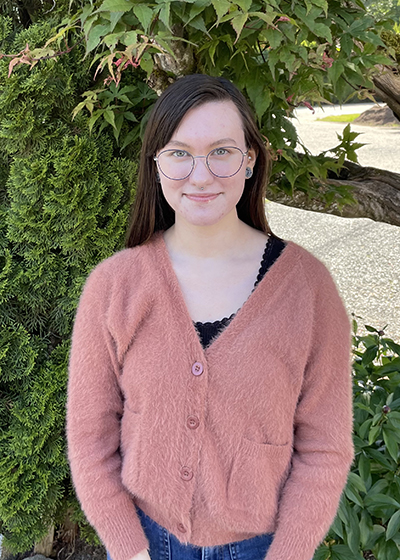
Nicola Ferguson
Luminescence dating of ancient environments, Hudson Bay Lowlands
Faculty supervisor: Dr. Olav Lian
Personal Note: Working in the OSL lab has given me the opportunity to get relevant work experience while building up my research skills. My academic goals include doing an honours project and continuing with research in the OSL lab, and then eventually going on to do a Master’s degree. As for my career goals, I would be happy with any job in the geosciences and am hoping to get experience working out in the field.
Project Summary: The Quaternary (last c. 2.5 million years of Earth’s history) landscape in the Hudson Bay Lowland region is complex. This area has exceptional access to numerous thick exposures of sediments that represent the last three glacial-nonglacial cycles. During glaciations ice eroded bedrock and dispersed economic minerals about the landscape. Knowing the timing of these events allows them to be linked over time and space. Our part of the research is intended to design and test luminescence dating techniques to provide ages for nonglacial intervals.
Our research has shown that the laboratory protocols that we have developed can be used to date events associated with the last two glacial cycles, and it has also shown promise of extending it beyond that. Our research is significant as it will provide absolute ages for key geo-climatic events, which will allow sediments associated with them to be connected over space. This, in turn, will help locate the sources of economic minerals.
Return to recipient list ↑
Community Service Research Award

Julia Whittaker (SLUEC Arts)
Starling Management on Blueberry Fields in East Matsqui – A CityStudio Project
Faculty supervisors: Larissa Horne and Dr. Mariano Mapoli
Personal Note: Hello, my name is Julia Whittaker, and I am graduating with my BA in Geography with an Environmental Science concentration and an Advanced Proficiency Certificate in Spanish. Throughout my degree, I discovered I often did my best and was most interested in an assignment when it was hands-on, and when I felt like I was directly involved in a project. This led me to choose classes where I could have these kinds of research opportunities and greatly helped my journey to figure out what future career paths would suit me best.
Project Summary: This project was initiated by CityStudio, a program that connects the City of Abbotsford and UFV to help discover possible solutions to civic issues. The presented challenge was to find a solution to address crop loss and damage caused by European Starlings on blueberry fields in Abbotsford while considering relationships between farmers and adjacent landowners. This was a group project that involved the work of students in GEOG 452 and GEOG 257 at UFV during the Winter 2020 semester. Throughout researching possible prototype solutions, extensive collaboration was done with residents, farmers, and experts in all related fields. At the time of completion of the Winter 2020 semester, my group (Halle Kwak, Alysha Bergen, Chloe Hogan, Emma Conner, Matthew Warnock, and I) presented several possible ideas to combat the issue specific to the East Matsqui area that involved holistic methods like predator birds and advanced technologies like lasers.
While the solution to this issue is complex, this research project created a baseline for the study area in question and allowed for future research opportunities to take place to assess the viability of the recommendations presented. This project’s significance also goes beyond solving crop-loss issues in that it shows the importance of community and collaboration and how integral it is for projects such as these to consider all aspects of an issue when presenting viable solutions.
Indigenous Research Award
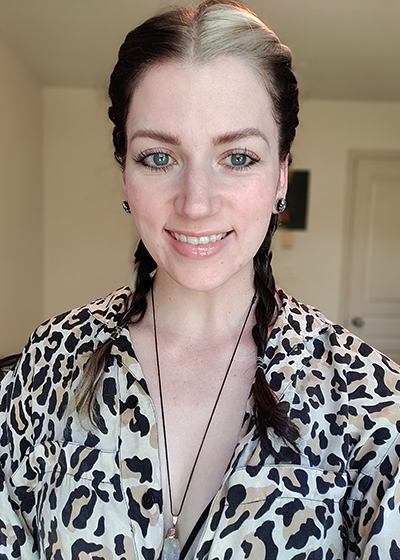
Alice Clark (English)
True Patriot Love? Exposing the Illusion of Canadian Multiculturalism Through Indigenous and Immigrant Literature
Faculty supervisor: Dr. Michelle La Flamme
Personal Note: I just finished my final semester of my Bachelor of Arts in English at UFV and am set to graduate in a few weeks. With my degree, I hope to explore both fiction and non-fiction writing more deeply and do what I can to help educate people about current events in an approachable, understanding, and engaging fashion.
Project Summary: Canada is often idealized as a multicultural nation, welcoming citizens from all backgrounds with open arms. If we explore literature written by Canadian immigrants and Indigenous folk, however, we can conclude that this reputation is somewhat disingenuous.
By dissecting short works penned by authors from Indigenous and immigrant backgrounds, my paper “True Patriot Love?” shows how these Canadians were oppressed and segregated under the dangerously vague term of ‘multiculturalism’. I think Canadians have much to learn about our nation’s history and hope that the research in my paper can contribute to a deeper and more accurate knowledge of the strides we must make so our ‘multicultural’ identity is more than an illusion.
Return to recipient list ↑
Industry Engagement Awards
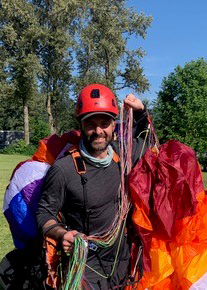
Maciej Kaczor (Electrical Apprenticeship)
Automated Honey Extraction System Project
Faculty supervisor: Daniel Smythe
Industry partner: Worker Bee Honey Company
Personal Note: After completing my electrical course at UFV, I was offered to undertake a small role in the “Automated Honey Extraction System Project” by wiring its equipment and “bring it to life.” As the Project continued my scope of responsibilities expanded to not only wiring but also troubleshooting, solving programming issues as well as mechanical and electrical problems. Working on this Project significantly added to my skillset and passion in electrical work, further solidifying where I would like to see myself in the future.
Project Summary: The main objective of the “Automated Honey Extraction System Project” was to automate the key stages in the honey extraction process, which has historically been labour intensive or involved machines that failed to offer speeds high enough or success rates to be implemented on an industrial large-scale basis.
Developing this prototype came with unique challenges and the machine continues to be a “work in progress”; however, with our findings regarding new sensor designs, the application of stepping-motors, the use of high speed pneumatic actuators, and the unique blade designs we developed will continue to support the future version of this machine. The hope is that the machine will have the capability to fully automate process of de-boxing the frames, initial wax removal, and splitting the frames at an industrial large-scale.
Return to recipient list ↑
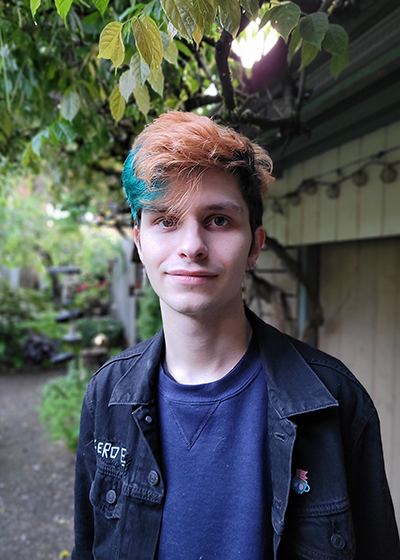
Holden Pimentel (Computer Science)
The Rolling List Software
Faculty supervisor: Dr. Opeyemi Adesina
Personal Note: Hi, I'm Holden. I'm a Computing Science major with a minor in mathematics, interested in Theoretical Computing, Graph Theory, and Automata Theory. In the coming years I hope to move on to graduate school to study one of those above topics, and hopefully finish with a PhD. This research opportunity with Dr. Adesina has been a difficult but fulfilling challenge where we explored a domain that wasn't really covered in the literature and it's an experience that I'm grateful for.
Project Summary: We studied a variant of the flexible job-shop problem. Our variant looks at the effect of change-over times where an operator must perform some work to get a machine back online. This means taking off the completed parts and resetting raw material. Even with an optimal schedule, the operators can choose to service machines in an order that leads to sub-optimal results, especially when jobs have higher priorities than others. The algorithm we developed exploits a jobs cycle-time as a "capacity" in which other jobs can fit. For a job to fit it must be able to finish its cycle time and be serviced before the corresponding job needs to be serviced. We used a recursive greedy approach comparing several different selection methods. Each came with their own trade-offs, and general improvements to the total idle-time of machines, while having either a minimal or a positive effect on the makespan.
Return to recipient list ↑
































